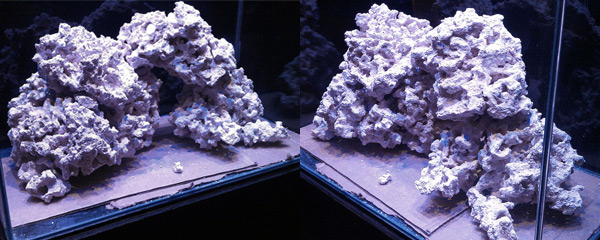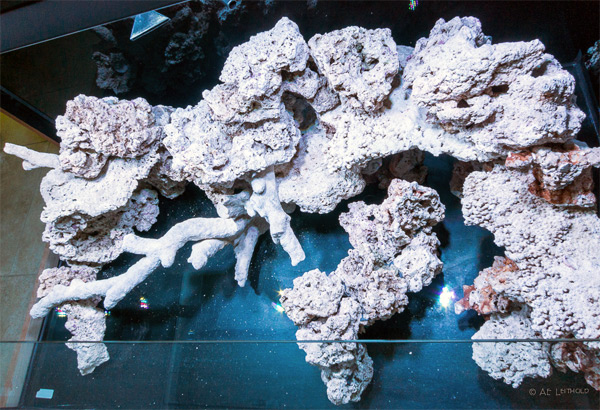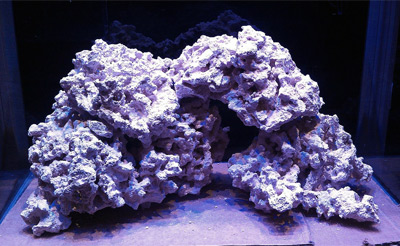When aquascaping their tanks, marine aquarium hobbyists have the option of using live rock or dry rock (or some combination thereof) to create the foundational reef structure. Each of these options is completely workable but, as with every aspect of this hobby, has its own set of advantages and disadvantages. So how to choose which approach might work best for you given your unique circumstances, budget, etc.?
To aid in your decision making, let’s explore the pros and cons of each approach, beginning today with the use of dry rock. I’ll tackle the plusses and minuses of live rock aquascaping in a future post.
Pros of dry rock aquascaping
- Dry rocks tend to be easier on the pocketbook. One reason is that they ship dry so you’re paying only for the weight of the rocks, not the added weight of water as with live rock, and there’s no need to shell out for expedited shipping. Also, the better-quality dry rocks on the market tend to be less dense than live rock, so you get a greater volume of rock for your aquascaping dollar.

- There’s no life to lose. With no encrusting organisms to preserve, you don’t need to worry about keeping the rocks wet and getting them back into salt water as quickly as possible. That means you can spend as much time as you like shaping, affixing, and assembling your rockwork until you’re completely satisfied with the arrangement, and all of this can be done outside the tank on any appropriate supportive surface without dripping water all over the place.
- There are no hitchhiking organisms. Aiptasia and majano anemones, stowaway crabs, mantis shrimps, those pesky red planaria, bubble algae, and other troublesome incidental organisms aren’t an issue with dry rocks (though they can still enter the system in other ways—e.g. on coral specimens attached to rocks).
- Dry rocks can be exceptionally porous. As I mentioned, the better-quality dry rocks on the market today are extremely porous and gnarly, so they’re very easy to shape and alter and offer a myriad of nooks, crannies, and hidey holes for livestock to shelter in.
Cons of dry rock aquascaping
- There are no hitchhiking organisms. Yep, I know I listed this as a pro above, but not all live rock hitchhikers are worrisome. In fact, most are benign and all of them—even the troublemakers—can be quite fascinating. One of the coolest aspects of aquascaping with live rock is observing the diverse life forms that emerge or hatch out over the ensuing weeks, months, and years.
- The lack of biodiversity on and in the rocks also means they don’t come with established colonies of beneficial bacteria. As a result, the cycling process with dry rocks versus live rocks can be more protracted.

- There’s no coating of coralline algae. If you appreciate an attractive coralline patina, you’ll have to introduce it to the system in some other way, for example by seeding the tank with rubble from a mature system. I’ve also found that a coating of coralline algae isn’t merely an aesthetic benefit. Absent coralline, troublesome algae forms are more likely to gain a foothold on rock surfaces—sort of like weeds taking advantage of open soil in a garden or landscape.
- Depending on the type and origin of the dry rocks, they can contain organic matter within their pores that breaks down and releases dissolved nutrients. For this reason, it’s a good idea to cure the rocks for several weeks in heated salt water with vigorous circulation provided before using them in a display tank.



